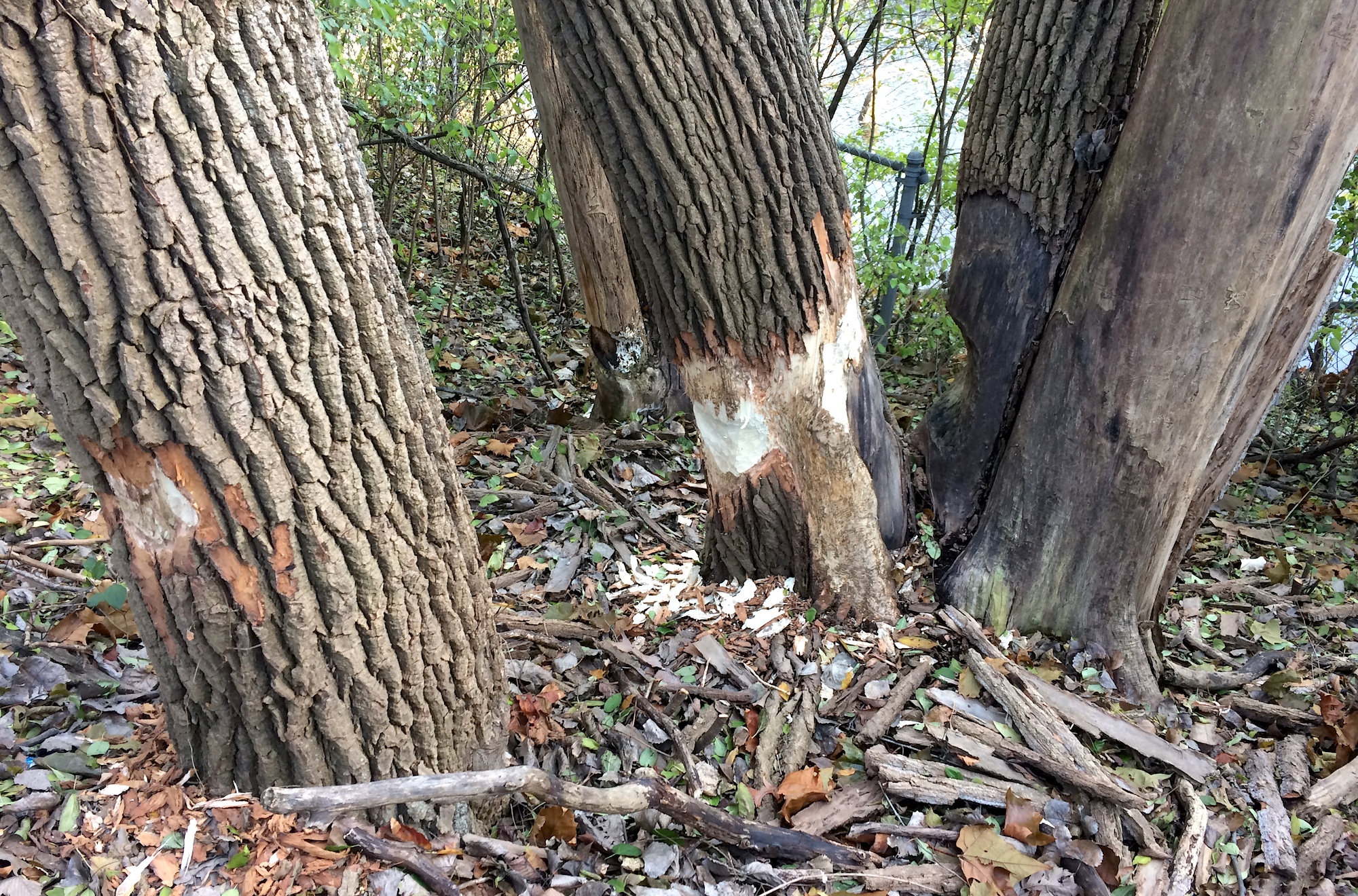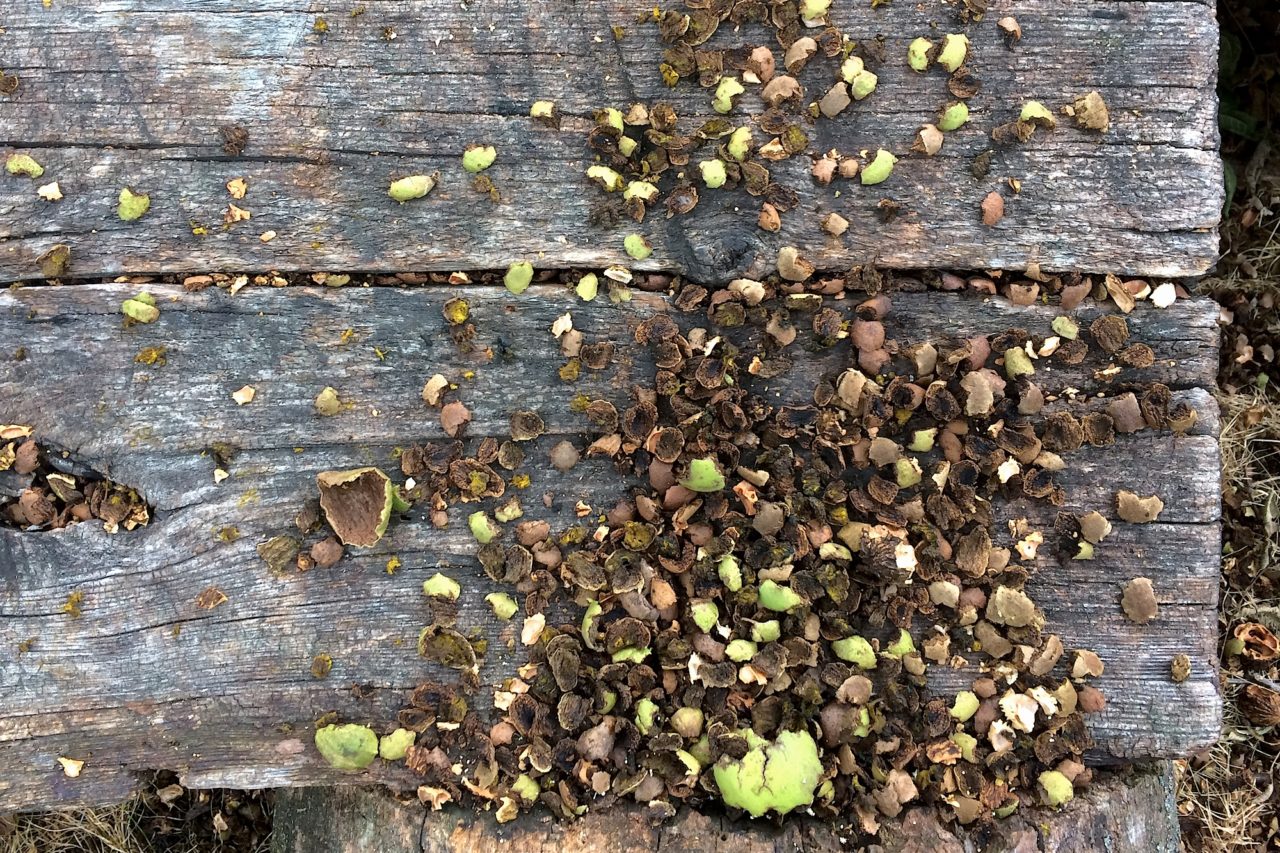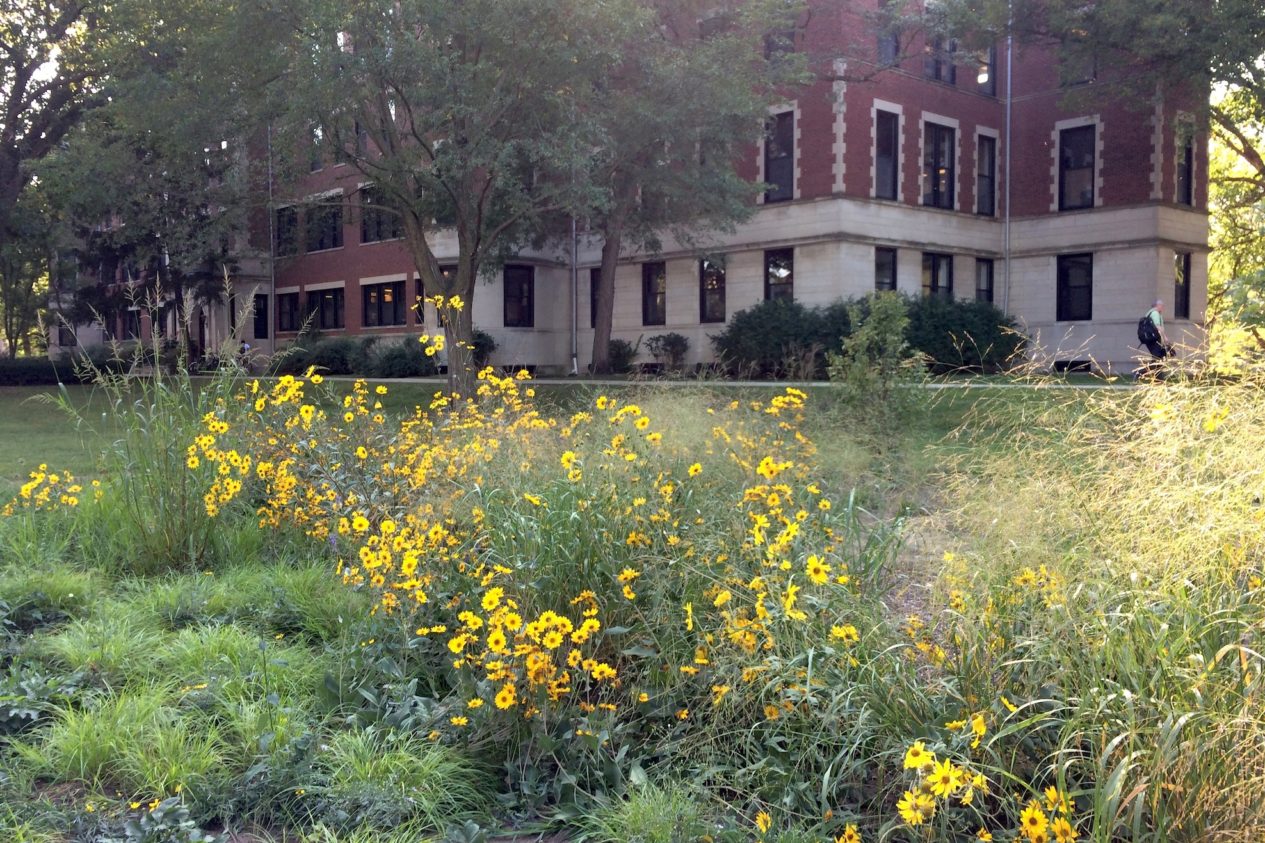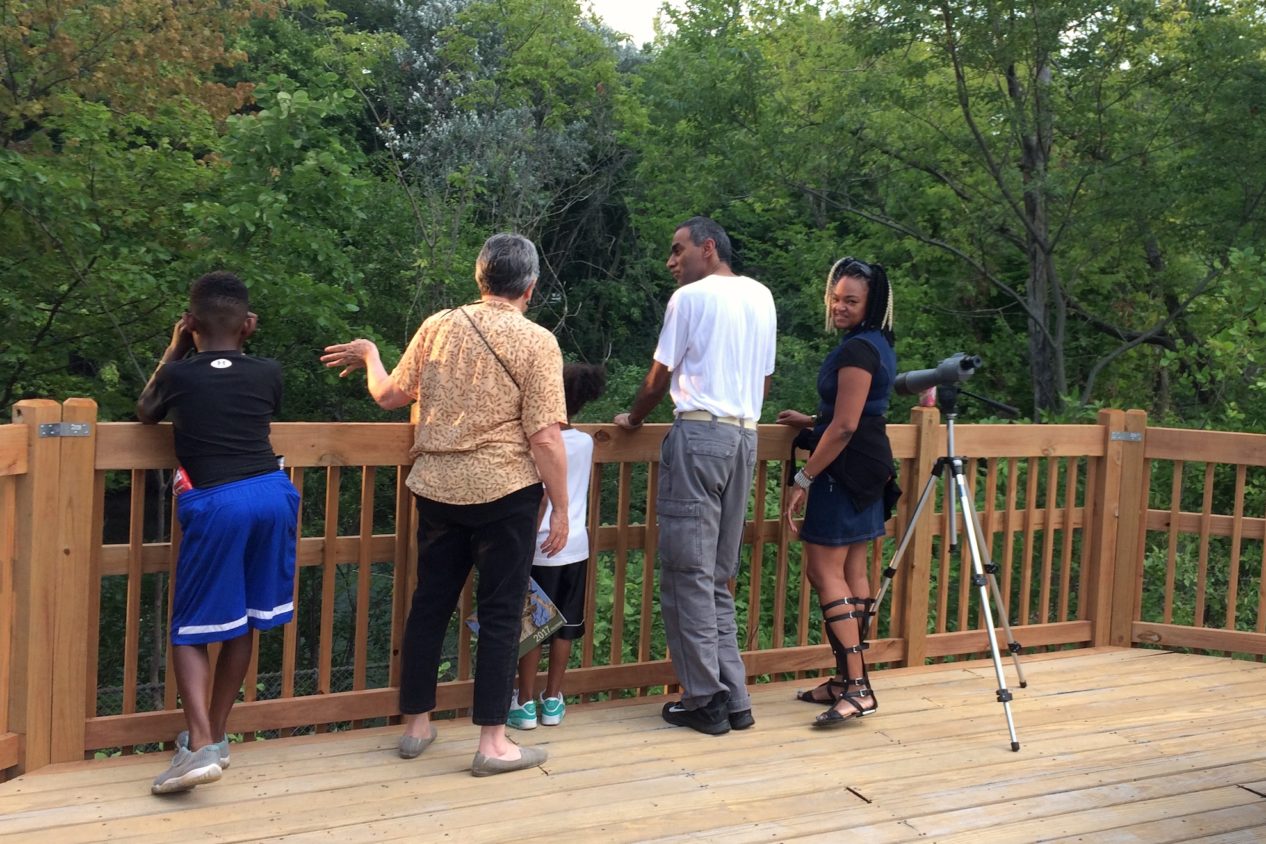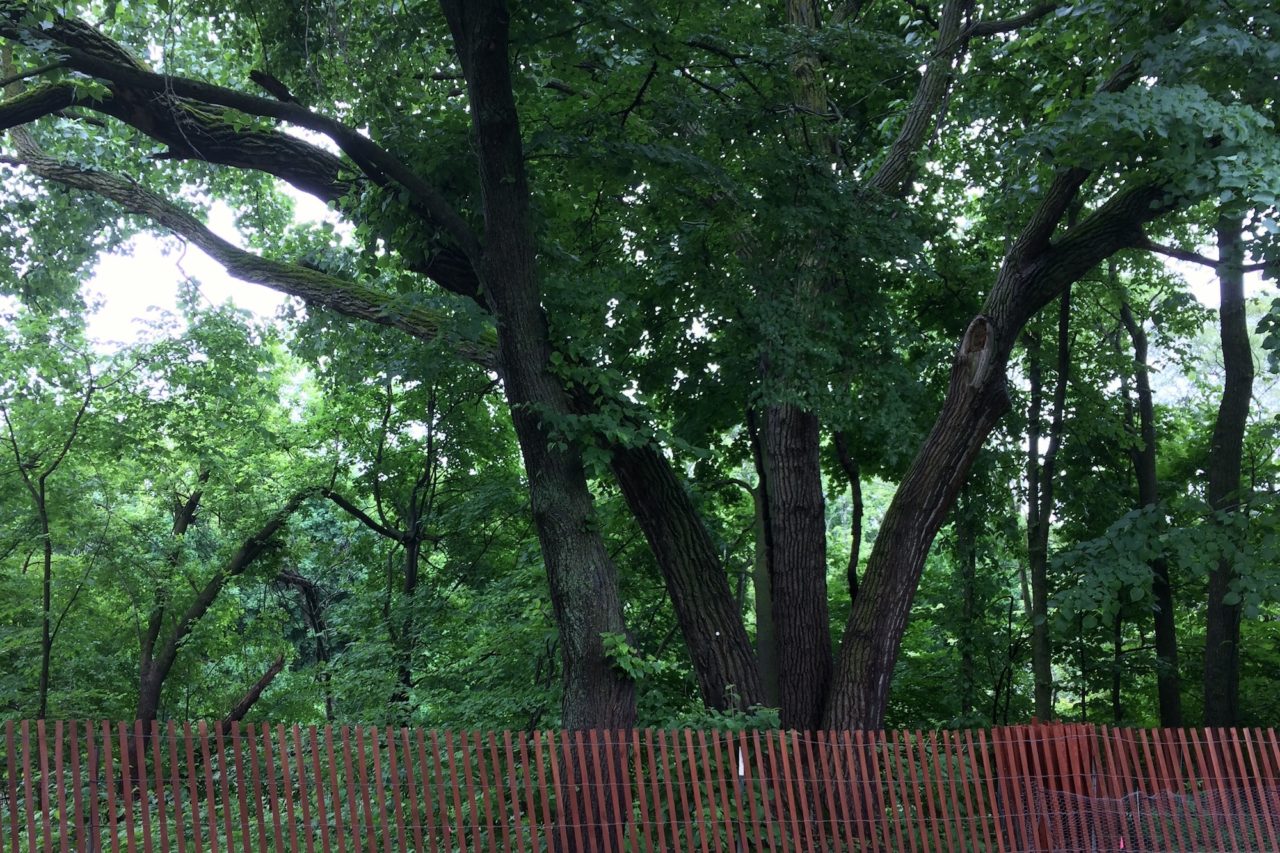 The Ladd Arboretum’s resident beaver has been active this month. Volunteers have been active, too, installing fences to try to protect some vulnerable trees. On Saturday, a group of Northwestern physics and astronomy students worked on a big cottonwood in an attempt to save the one stem that hadn’t already been completely girdled by the hungry beaver.
The Ladd Arboretum’s resident beaver has been active this month. Volunteers have been active, too, installing fences to try to protect some vulnerable trees. On Saturday, a group of Northwestern physics and astronomy students worked on a big cottonwood in an attempt to save the one stem that hadn’t already been completely girdled by the hungry beaver.
A hundred years ago, beavers had been almost wiped out by trappers and habitat loss, but their numbers have bounced back since they were reintroduced to Illinois in 1929. They don’t dam the channel, but live in burrows in the banks. Although they have been spotted during the day, they are more active at night. Beavers don’t hibernate, so they are particularly busy at this time of year, laying in food. Although they eat plants like duckweed and sedges during the summer, they rely on woody plants during the winter. Unfortunately, the list of trees they are known to eat is long and includes a number of those found in the arboretum—not only cottonwood, but black cherry, willow, maple, sweet gum, tulip poplar, dogwood, beech, and even oak. If you look around the arboretum and Twiggs Park, chances are you’ll find other signs that the beaver has been at work.
The City plans to repair the chainlink fence in the area where this big cottonwood is growing to try to make it a little more challenging for the beaver and to give the new trees and shrubs we are planting a chance to get established while the beaver finds something else to eat. You can find out more about Illinois beavers here.
— Wendy Pollock
